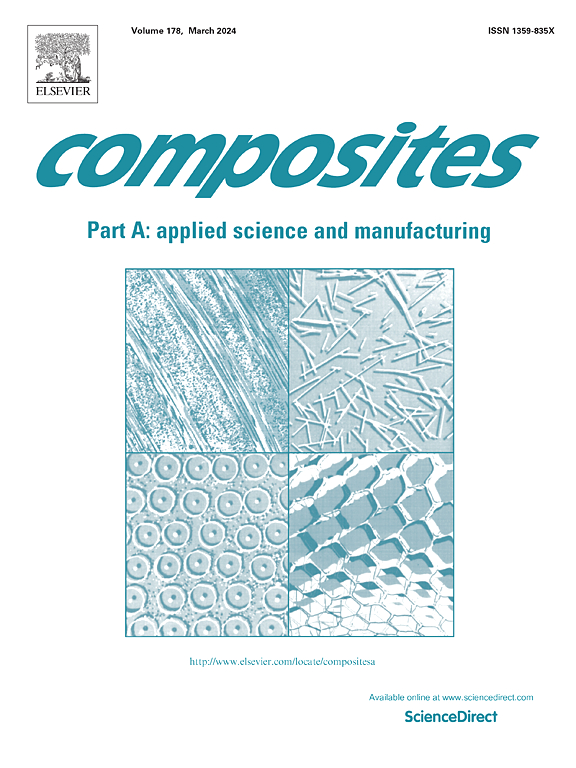碳化特征对石墨/酚醛和沥青/酚醛复合材料烧蚀行为作用的比较研究
IF 8.1
2区 材料科学
Q1 ENGINEERING, MANUFACTURING
Composites Part A: Applied Science and Manufacturing
Pub Date : 2025-03-27
DOI:10.1016/j.compositesa.2025.108886
引用次数: 0
摘要
本研究探讨了石墨碳(GC)的碳化特征、残炭结构和微观结构对石墨(G)和预氧化中间相沥青(OMP)改性硼酚醛(BPR)复合材料烧蚀行为的影响。结果表明,引入的 G 和 OMP 都能有效阻止缺陷的生长,同时提高烧蚀过程中残留炭的石墨化程度。然而,由于 G 与基体之间的热尺寸稳定性不匹配,GBPR 烧蚀表面的某些区域在早期会出现随机飞溅。但由于 OMP 与树脂基体一起经历了碳化过程,OMPBPRs 的烧蚀表面保持了完整和光滑。因此,我们发现马赛克组合的形成和共碳化过程的相容性是提高烧蚀性能的关键。这些发现将为未来开发更先进的聚合物基质烧蚀复合材料提供一些启示。本文章由计算机程序翻译,如有差异,请以英文原文为准。
Comparative investigation exploring the role of carbonization features on the ablation behavior of graphite/phenolic and pitch/phenolic composites
This study examines the influence of carbonization features, char structures and microstructures of graphitic carbon (GC) on the ablation behavior of graphite (G) and pre-oxidized mesophase pitch (OMP) modified boron phenolic (BPR) composites. Results showed that the introduced G and OMP can both effectively hinder the growth of defects, while improve the graphitization degree of residue char during ablation. However, some areas of the ablated surface of GBPRs would randomly splashed at an early stage because of the thermal dimensional stability mismatch between G and matrix. But as the OMP underwent a carbonization process, in company with the resin matrix, the ablated surface of OMPBPRs keep complete and smooth. Therefore, we found that the formation of mosaic combination and the compatibility of co-carbonization process are the keys for enhanced ablation performance. These findings would provide some inspirations for the development of more advanced polymer-matrix ablative composites in the future.
求助全文
通过发布文献求助,成功后即可免费获取论文全文。
去求助
来源期刊

Composites Part A: Applied Science and Manufacturing
工程技术-材料科学:复合
CiteScore
15.20
自引率
5.70%
发文量
492
审稿时长
30 days
期刊介绍:
Composites Part A: Applied Science and Manufacturing is a comprehensive journal that publishes original research papers, review articles, case studies, short communications, and letters covering various aspects of composite materials science and technology. This includes fibrous and particulate reinforcements in polymeric, metallic, and ceramic matrices, as well as 'natural' composites like wood and biological materials. The journal addresses topics such as properties, design, and manufacture of reinforcing fibers and particles, novel architectures and concepts, multifunctional composites, advancements in fabrication and processing, manufacturing science, process modeling, experimental mechanics, microstructural characterization, interfaces, prediction and measurement of mechanical, physical, and chemical behavior, and performance in service. Additionally, articles on economic and commercial aspects, design, and case studies are welcomed. All submissions undergo rigorous peer review to ensure they contribute significantly and innovatively, maintaining high standards for content and presentation. The editorial team aims to expedite the review process for prompt publication.
 求助内容:
求助内容: 应助结果提醒方式:
应助结果提醒方式:


